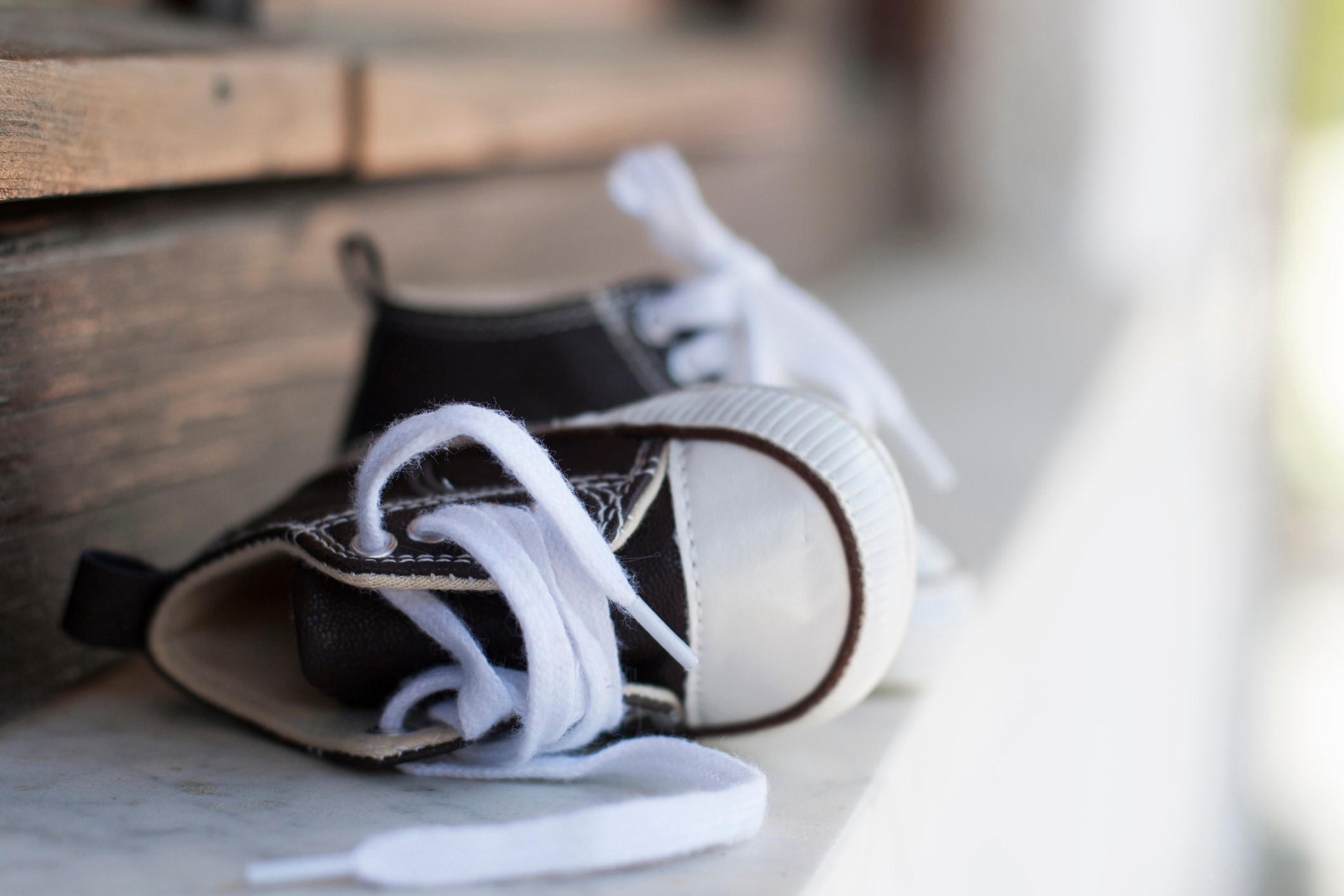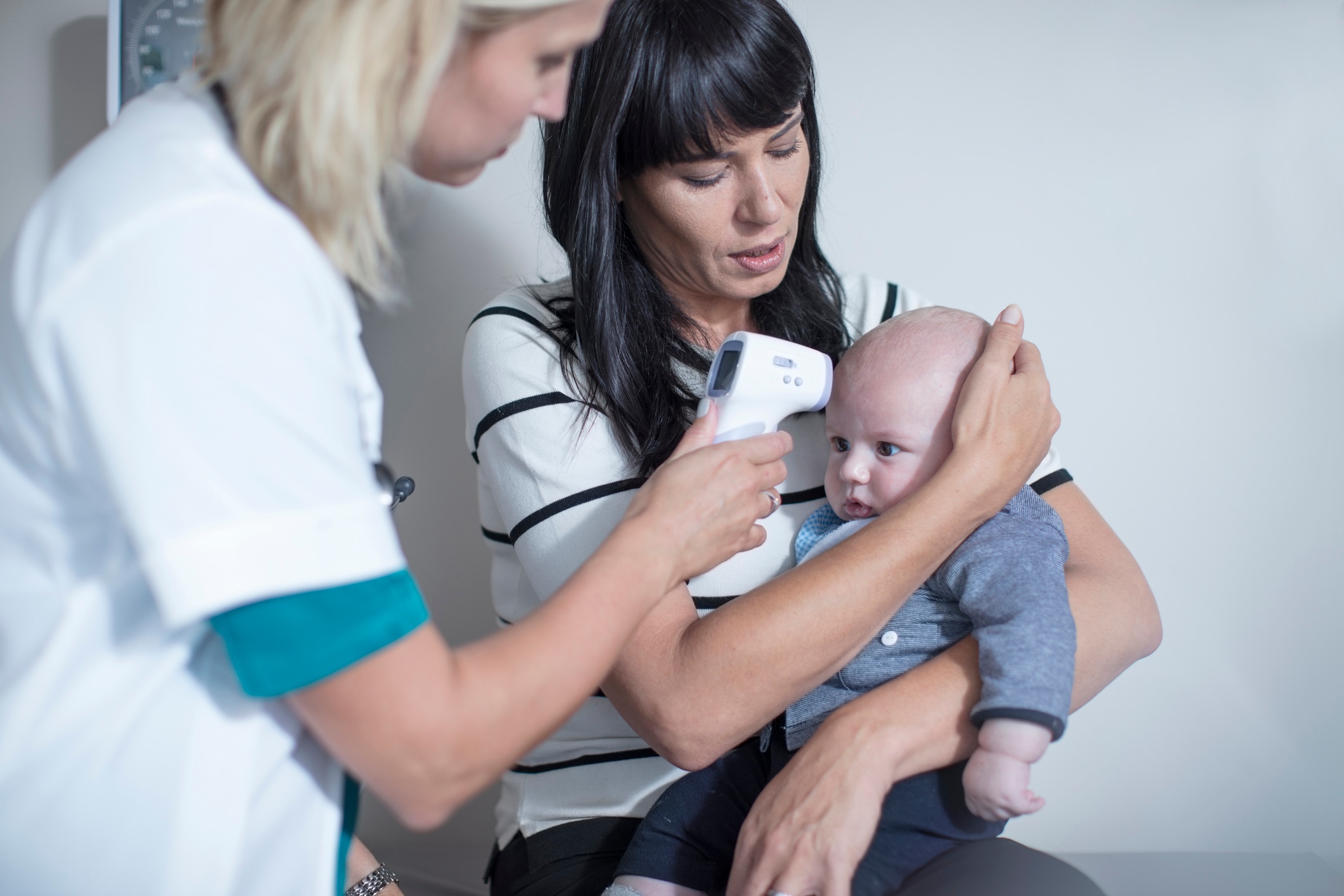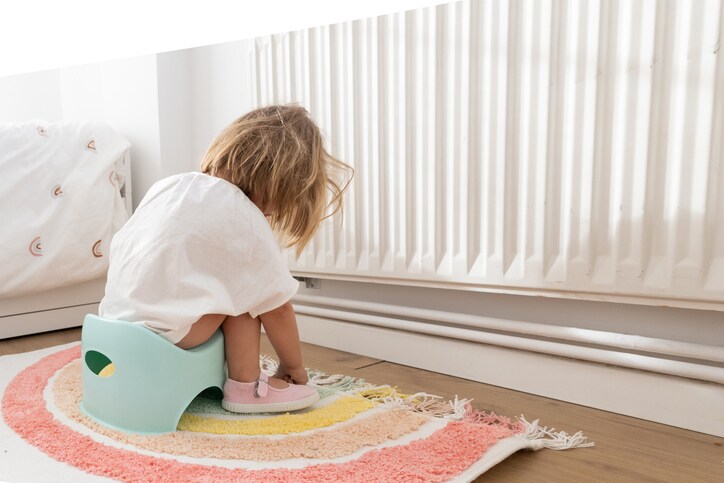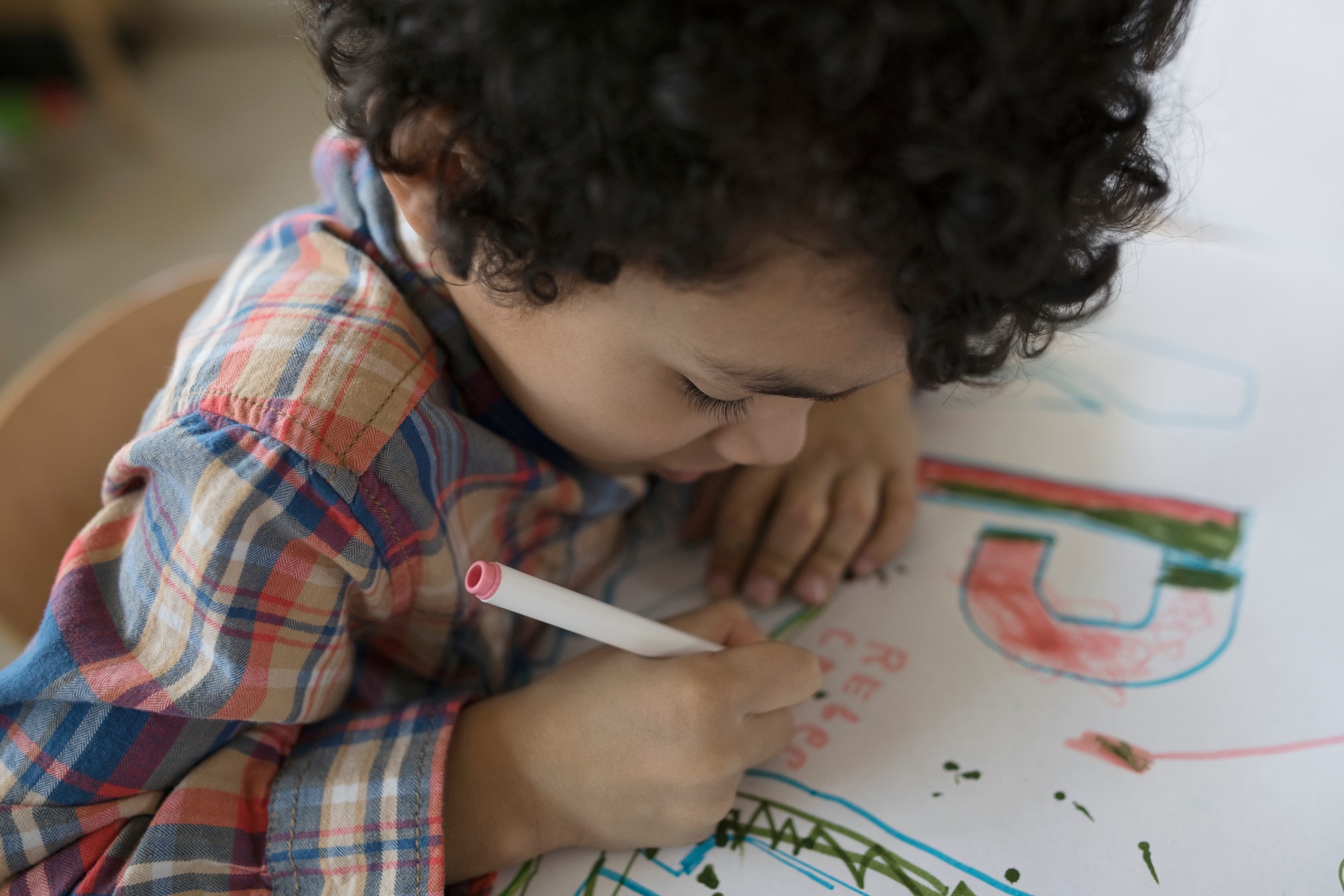In this article
The transition from preschool to kindergarten marks a significant milestone that can bring both excitement and maybe a bit of nervousness. As you watch your child embark on this new adventure and review the back-to-school checklist, you might be wondering what else you can do to prepare for this big step. You may also be wondering what the difference will be between preschool vs. kindergarten. Are you and your child truly ready?
The type of preschool a child goes to often has an effect on how a child adjusts to kindergarten, says Sari Goodman, a former elementary principal in Los Angeles. “A child attending a play-based preschool may need some preparation for the transition,” she explains. While play-based students enter kindergarten with their own strengths like understanding, sharing and taking turns, it’s possible they didn’t do a lot of sitting for long periods of time or testing, so they may have to adjust to the structure of a traditional kindergarten classroom.
To help with back-to-school prep, Goodman and other experts share the difference between preschool vs. kindergarten, as well as their best advice for what to expect and how to get prepared for this important stage of your child’s education.
Key takeaways
- Transitioning from preschool to kindergarten means your child will enter a more structured environment.
- Kindergarten requires kids to be more independent than they were in preschool.
- There are steps you can take at home to help your child be even more successful as they move from preschool to kindergarten.
What is preschool?
A preschool program typically serves children aged 3 to 5. In preschool, “the primary focus is on fostering socialization, curiosity and foundational readiness skills through play-based exploration and nurturing relationships,” explains Karin Shultz, head of school at Mizzentop Day School in Pawling, New York. Preschool includes activities to help children better communicate their feelings and become more responsible, for instance, by putting their toys away or being tasked with bringing paperwork or projects home to parents.
Parents can expect preschools to focus on “foundational development — such as language, early math, social-emotional growth and motor skills through structured play and exploration,” explains Chanelle Pough, the executive director of the Florida Early Learning Corps (FELC).
What is kindergarten?
Kindergarten is the first official step of standardized education that serves kids 5-6 years old and is designed to prepare students for the demands of first grade and beyond. Kindergarten builds on the foundation built in preschool or at home with bigger expectations, more formal instruction that includes reading, writing and math, explains Pough.
“Students are expected to sit for more extended periods, follow multi-step directions and engage more independently with educational content,” she says. Students also learn how to be a part of a community by learning to share and gaining confidence in themselves and those around them.
How preschool differs from kindergarten
Both preschool and kindergarten focus on foundational skills to help young children develop more independence, responsibility and confidence. However there are a few key differences that set them apart.
Structure
The biggest difference between preschool and kindergarten is the structure. “The kindergarten schedule is tighter, and there are more of what I call ‘have-tos,’ which are the tasks students are required to do in kindergarten,” says Goodman.
Kids can expect to sit in a chair at a table or desk for a specified period of time and do an assigned activity, whereas “preschoolers have more choice in how they sit and focus on a particular task, and there is often more flexibility in following instructions,” she says.
Pencil and paper tasks
Goodman notes another difference are the “paper and pencil tasks” a kindergarten student has to do to strengthen fine motor skills. Children in preschool may use thick pencils to practice coordination, but kindergarten students use pencils to trace letters, circle items and practice writing numbers in workbooks and on worksheets.
No naps
Another big difference is that there are no naps in kindergarten, points out April Arthur, a kindergarten teacher at Pinewood Elementary, in Orlando, Florida. Losing nap time is often a big change for children, especially with the longer day and shorter play breaks, she notes.
Curriculum differences
Preschool curriculums usually involve more social and emotional skill building with letters and numbers introduced by song. There is often some alphabet identification and basic counting, as well. Kindergarten curriculum moves from letter identification to learning the sounds of letters and sound blends to gain the foundational skills for reading.
Formal assessments
Kindergarten often involves more formal assessments than preschool, says Arthur. These generally occur during the first nine weeks of school to record early benchmarks in reading, writing and math. They are also done throughout the year to track progress.
What you need to know about the jump from preschool to kindergarten
When it comes to the transition between preschool and kindergarten, readiness matters, says Pough. “Readiness isn’t just academic; it’s cognitive, social and emotional,” she explains, adding that children need the cognitive ability to follow multi-step instructions, the social skills to share the same materials and work cooperatively with their classmates plus the emotional regulation to handle frustration when they can’t get what they want or face challenges when working to complete a task.
The transition from kindergarten is a process, says Shultz. For example, it might take some time for your child to get used to the longer day, increased expectations and assessments. And you might notice your child’s emotions fluctuate during the transition, she notes. “It’s perfectly normal for children to feel excited one day and apprehensive the next,” says Shultz.
To promote comfort and positive anticipation of kindergarten, Shultz recommends maintaining consistent routines at home and speaking positively about school.
“Readiness isn’t just academic; it’s cognitive, social and emotional.”
— Chanelle Pough, an advocate for education equity
How to prepare your preschooler for kindergarten
You don’t have to wait until the week before school to start helping your child ease into the transition ahead. Arthur says parents can start teaching kids skills they’ll need to bring to the kindergarten classroom, such as learning to wait for their turn and how to share. This will especially become important for circle time in a kindergarten classroom. Children have to raise their hand and wait patiently for their turn to speak so they don’t interrupt their classmates.
Elizabeth Fraley, founder of Kinder Ready in Los Angeles, offers a comprehensive list of suggestions for parents who want to give their soon-to-be kindergartener a leg up:
Schedule school visits or drop in on summer programs
Many schools offer summer programs on campus — open houses, family mixers or kindergarten readiness events. These opportunities help children become familiar with the school environment and ease first-day nerves. Participating in these activities can make a big difference in helping your child feel comfortable and confident.
Build literacy habits
Join a summer reading program at your local library. These programs help reinforce the importance of literacy and nurture a love of books — key to becoming a lifelong learner.
Practice transitions
Use pre-anticipatory statements to prepare your child for transitions. For example: “In 10 minutes, we’re leaving for swim class.”
Have your child gather what they need — for instance, a towel, sunglasses, water shoes — and offer time reminders at five minutes, two minutes and again when it’s time to go. These routines help children build autonomy and learn to manage transitions, just like they’ll be expected to do in kindergarten.
Consider structured learning and summer slide prevention
Think about booking a few sessions through a tutor, educational program or kindergarten readiness course like KinderReady.com. Even one session per week can build comfort, confidence and school-readiness.
Preschoolers — and really, kids of all ages — often experience the “summer slide,” which is when academic skills fade without practice. Regular learning sessions over the summer help maintain academic momentum and strengthen self-regulation, which becomes increasingly important as children shift from preschool’s flexible structure to kindergarten’s more extended and structured school day.
Get into a daily routine
As school approaches, start waking your child earlier and structure the day with developmentally appropriate activities — camps, learning time or quiet play.
Visual schedules can help children understand the flow of their day and build independence. Here’s an example of a visual schedule chart from Lakeshore Learning.
Positive self-talk
Model positive self-talk to help your child build confidence, motivation and resilience. Starting kindergarten often involves trying new things and navigating unfamiliar situations. Equip children with a growth mindset and a healthy attitude toward learning. Teach them to use positive affirmations like:
● “I can do it!”
● “I’m getting better every day.”
● “I have the skills to succeed.”
The additional costs of kindergarten
Besides the extra responsibilities and more advanced curriculum that comes with kindergarten, there are also extra costs that come up during the school year.
According to Fraley, the most common types of kindergarten expenses include:
Extracurricular activities
Parents should be prepared to budget for extracurriculars like recreational sports, Girl/Boy Scouts, art classes and academic enrichment programs. These activities support children’s development outside the classroom and help build social, creative and academic skills.
Individualized support services
Some early learners may benefit from additional support such as speech and language therapy, occupational therapy, counseling or other educational specialists. These services are sometimes provided by the school at no extra cost, but in some cases, families may need to pay out of pocket. It’s helpful to be aware of this possibility early on.
Birthday parties
Parents may also want to plan for birthday celebrations. In many classrooms, it’s encouraged to invite all students to foster a more inclusive environment, which can mean hosting larger parties than expected.
Fundraising and school contributions
Most schools — public and private — host fundraising events throughout the year, such as annual auctions or donation drives. Families are often encouraged to participate by purchasing auction items or making contributions to help support school operations. While not always required, it’s common for schools to rely on this kind of community support, so it’s wise to anticipate these potential costs.
A final word on transitioning from preschool to kindergarten
Unlike the short, playful days of preschool that offer a gentle introduction to your child’s academic journey, kindergarten comes with longer days and new expectations for academic achievement, independence and growth. But this transition doesn’t have to be a source of stress. With the right preparation, kindergarten can become an adventure your child approaches with confidence and curiosity. The key lies in understanding how to prepare for this change and taking thoughtful steps to make the adjustment as smooth as possible.
It’s never too early to foster independence and strengthen the skills your child needs for the leap from pre-K to kindergarten. All of that hard work is sure to make the move from preschool to kindergarten rewarding and memorable.





